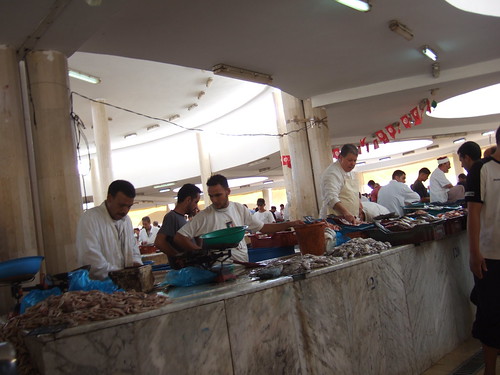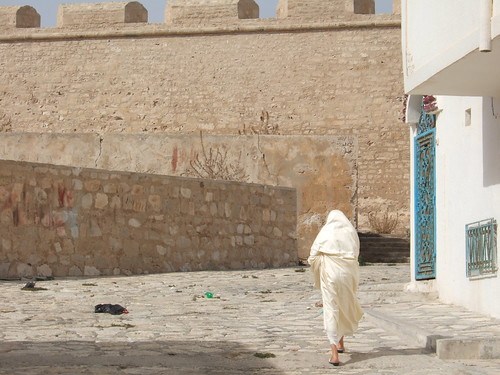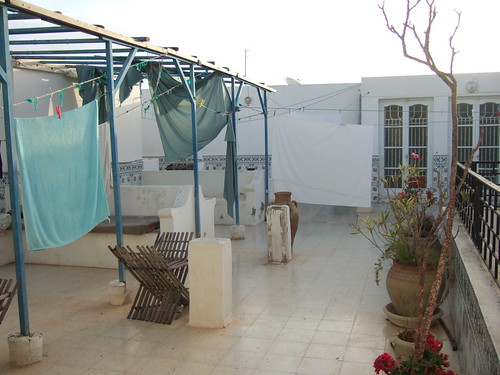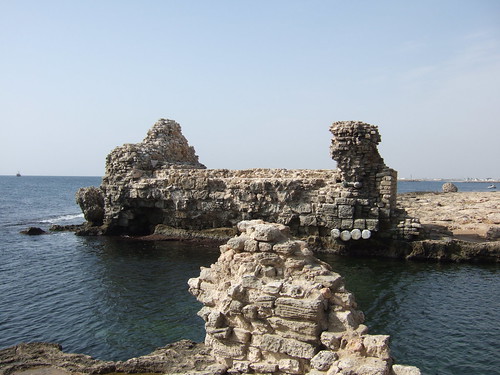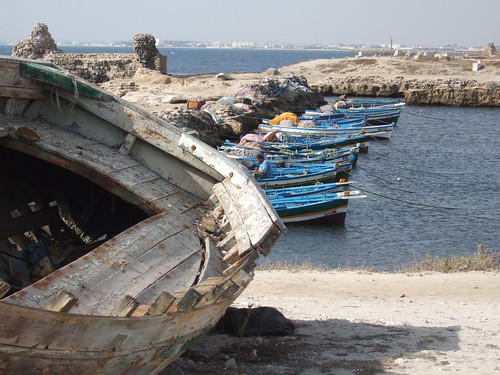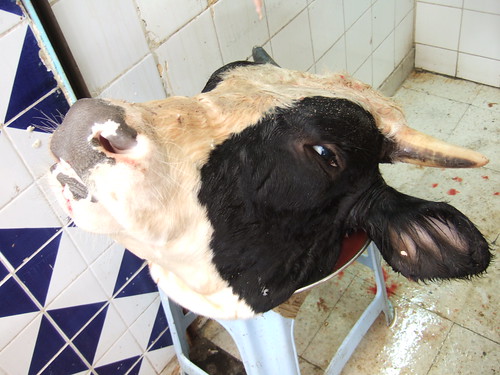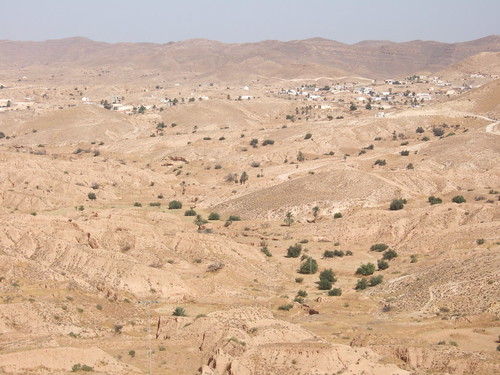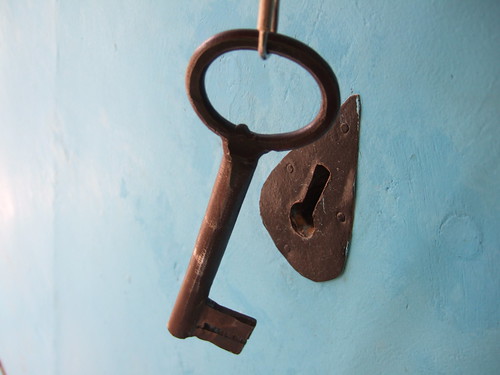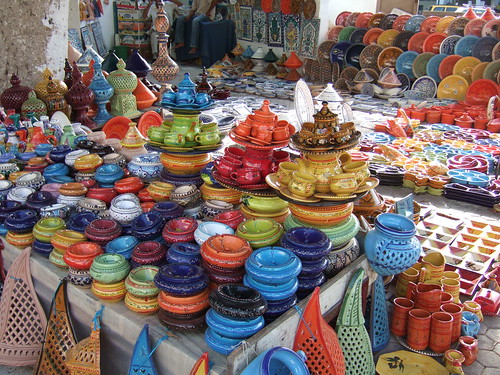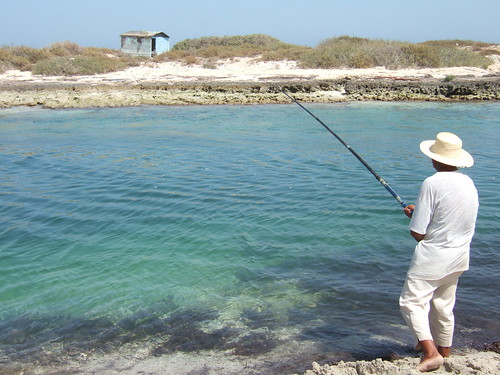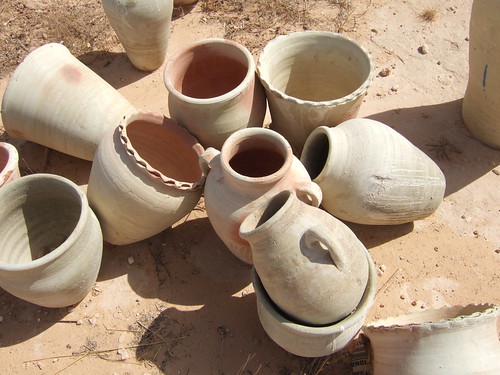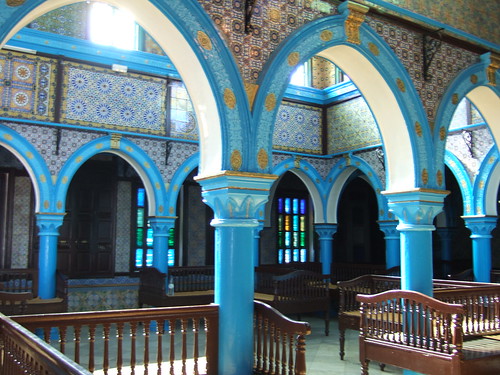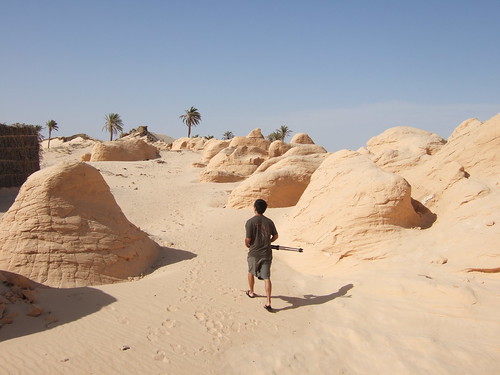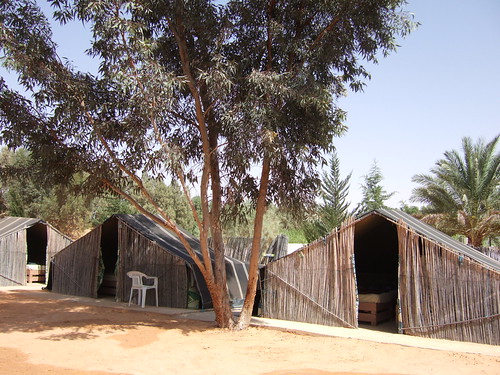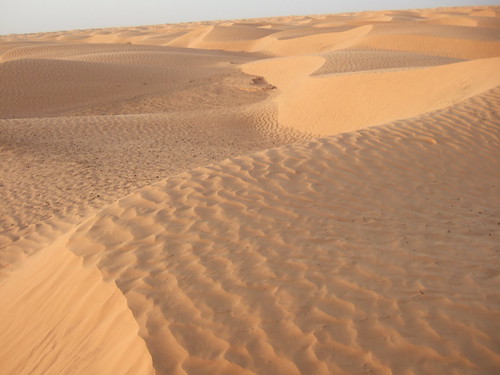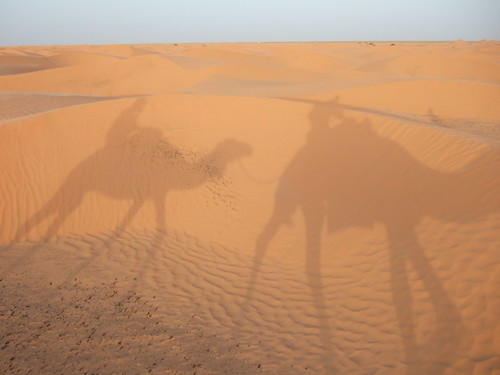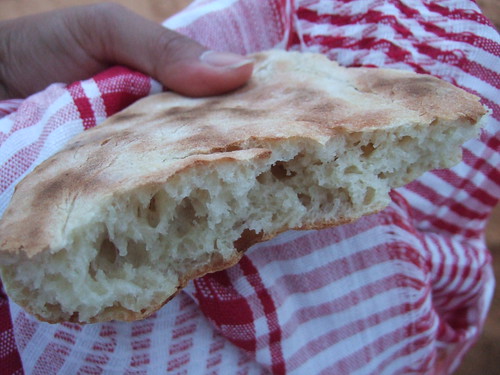To wrap up our two-week vacation in Tunisia, we just had to drive around the Cap Bon and end up in La Marsa so we could drop off our rental car and catch our flight out of Tunis. From Kairouian, our scenery changed from small town to suburbia. Nabeul is the country’s ceramic center and is increasingly the place tourists go to to escape the beach resort town of neighboring Hammamet.
We drove to the souq and checked in our cheapest accommodation to date, Pension Les Roses, at 15 dinars a night. At that price, or about US$12, there were no extra amenities. In fact, I had to ask for the owner and pay an extra dinar to unlock the bathroom door for me when I wanted to use the shower. I’d like to think that I’m an excellent packer–I finally got to use the just-in-case bed sheet on our bed. We had a balcony that looked out to the souq and the roof of the building next door. The marble columns and tall blue shutters in our room reminded us of the places we stayed in Cuba: family houses frozen in time. But as the tourists left town, the stores closed and it was difficult to look for a place to eat. We tried three recommendations from our guide book before we lucked out at L’Olivier, a German-friendly restaurant. Surprisingly, the mussels and squid were not overcooked, plus the fish stew with couscous was delicious. We ended up splurging for about 40 dinars including a few beers.
We left Nabeul the next day and made a few stops around the peninsula. It was a sunny and gorgeous day and driving the winding roads reminded us of wine country and the Pacific Coast. Kerkouane’s main tourist attraction is its Punic settlement ruins. Because the town was set on the coast, forts and towers were built to protect it from attacks. Excavations of kilns have also revealed it as a town of craftsmen and merchants. From the color of the water next to the ancient site, we imagined it was a very pleasant place to live.
The coastal caves of El-Haouaria were off-limits when we arrived. There was a small sign warning visitors of falling rocks, so all of us who tried to get a closer look of the yellow sandstones ended up walking around La Daurade Restaurant’s backyard instead.
When we thought nothing could be more beautiful than the view of the Mediterranean from El-Haouaria, we discovered the hot spring town of Korbous. The road was hugged by steep cliffs and narrow ravines and the sea stretched as far as our eyes could see. We wanted to stay here for the night as soon as we saw the small houses atop the coastal cliff-face and asked a guy at the Thermales et Touristiques to show us a room. It was a ghost town, but apparently, Tunis’ locals vacation here because of its hot springs and water treatments. The room we saw looked out to the blue, blue sea, but alas, it was unkempt and dirty because it wasn’t the high season. We were sad not to stay.
Carthage, the home of military hero Hannibal, was the setting of Dido and Aeneas’ romance in Virgil’s Aeneid. It was considered one of the greatest cities of the ancient world, and thus, also World-Heritage listed. Although its remains and sites are scattered about–you can’t tell its history right off the bat with the BMWs and the 250-euro nightly rate at Villa-Didon–its epic past is still impressive. What gave me the chills, however, was not the amphitheater ruins, nor the Carthage Museum on Byrsa Hill, but the manicured lawn of the American WWII cemetery on rue Roosevelt. There are 2,840 graves honoring the soldiers who died during the war and a Wall of Remembrance is devoted to the 3,724 others who were never found. It was so peaceful in there that we felt like we were trespassing. It was a humbling experience to be reminded of the horrors of war.
We ended up in La Marsa for the night at the American-owned Hotel Plaza Corniche. We met the older man who owned the place. We ended up chatting with him and his business partner after we found out we were all New Yorkers. The restaurant was next to the hotel pool and dinnertime was obviously its busiest. We were surrounded by big groups dining loudly and by young female locals out on a date with older male foreigners. Plaza Corniche was definitely the place to be in these parts. Kitschy as their decoration may be–there is a neon palm tree, Chinese lanterns and statues of butlers–we enjoyed our stay there because it allowed us to wind down and get ready for our flight back to the States. It was only too bad that they didn’t allow us to eat the wine and cheese we bought from the grocery store in the town center. We wanted to sit and eat by the pool before dinner time our last night, but the receptionist told us that we had to go back to our room if we wanted to eat something we didn’t buy from their restaurant. Because of that, we stepped out for dinner and refused to spend another dime there. I suppose it was just like being in New York City.
It was time to fly home. Bi-salama, Tunisia, and bari kelorfik.
Related post/s:
Day 12 & 13 in Tunisia: Cap Bon Peninsula photos on Flickr
Day 13 & 14 in Tunisia: Carthage and La Marsa photos on Flickr
Day 11 & 12: El Jem to Monastir to Kairouian, Tunisia









